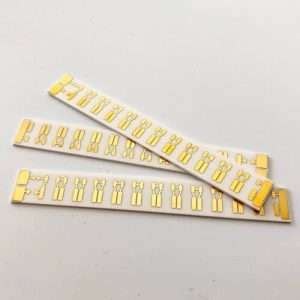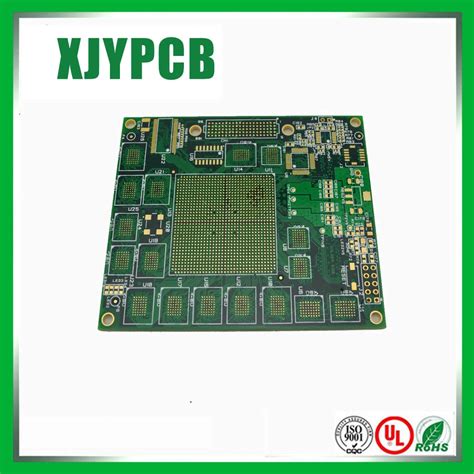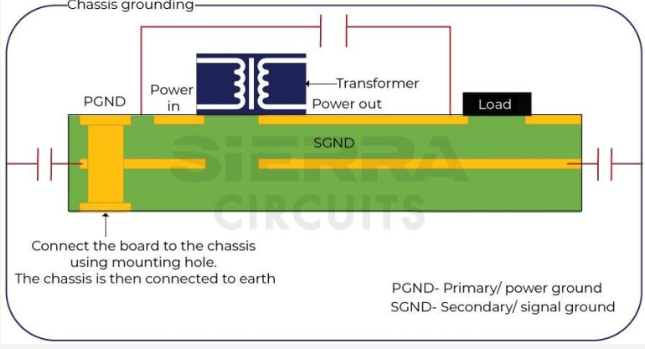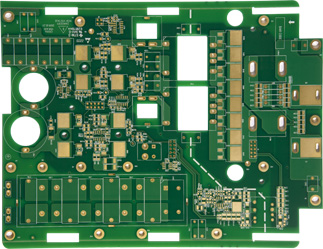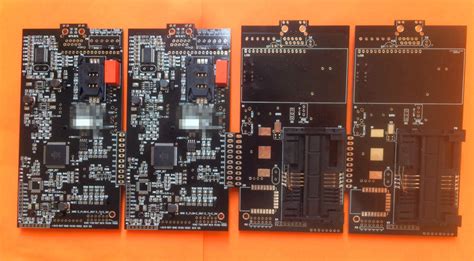Alumina PCB Manufacturers: Thermal Management and Reliability Solutions
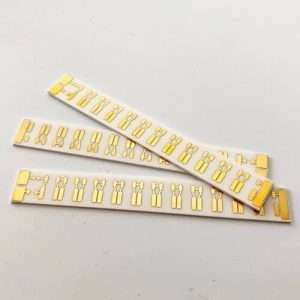
Key Takeaways
When selecting PCB manufacturing partners for alumina-based solutions, prioritize companies specializing in 99% Al₂O₃ substrates to ensure optimal thermal conductivity and mechanical stability. Leading PCB manufacturing companies leverage advanced processes—such as laser drilling and precision metallization—to minimize PCB manufacturing cost while maximizing reliability in high-temperature environments. For applications like automotive electronics or telecom infrastructure, these substrates excel at dissipating heat, reducing thermal stress on components.
“Partnering with manufacturers certified in IATF 16949 or ISO 13485 ensures adherence to stringent quality standards, critical for mission-critical systems.”
Innovations in PCB manufacturing business practices, such as automated optical inspection (https://www.andwinpcba.com) benefit from alumina’s low dielectric loss, making them ideal for high-frequency circuits. To balance cost and performance, evaluate suppliers’ capabilities in material sourcing, scalability, and customization—key factors in optimizing both thermal management and reliability.

Thermal Management in Alumina PCB Design
When designing alumina PCBs, managing heat dissipation is critical to ensure long-term performance in high-power applications. Unlike traditional substrates, 99% Al₂O₃ ceramics offer superior thermal conductivity (24-28 W/mK), enabling efficient heat transfer away from sensitive components. This becomes especially vital in industries like automotive electronics or telecom infrastructure, where temperature fluctuations can compromise signal integrity or device longevity.
To optimize thermal management, PCB manufacturing companies employ advanced techniques such as:
| Technique | Purpose | Impact on PCB Manufacturing Cost |
|---|---|---|
| Thermal vias | Channel heat to outer layers | Increases complexity by 15-20% |
| Copper thickness optimization | Balance conductivity and weight | Reduces material waste by 10-12% |
| Laser-drilled microvias | Enhance heat distribution precision | Adds $0.05-$0.10 per unit |
You’ll find that selecting the right substrate thickness and trace geometry directly influences thermal resistance. For instance, thicker alumina layers (≥1.0mm) improve heat spreading but may raise PCB manufacturing business overheads due to tighter tolerance requirements. Modern designs often integrate simulation tools to predict hotspots, allowing engineers to adjust layouts before prototyping—a cost-effective strategy for balancing performance and scalability. By prioritizing these methods, you ensure reliability without overburdening production budgets.

Reliability Solutions for High-Temperature Applications
When designing electronics for extreme environments, you need substrates that maintain performance under prolonged thermal stress. Alumina PCBs excel here due to their low thermal expansion coefficient and high thermal conductivity (24-28 W/mK), which prevent warping and delamination even at temperatures exceeding 300°C. Leading PCB manufacturing companies leverage 99% Al₂O₃ substrates to minimize thermal fatigue in applications like power converters or aerospace systems. To reduce PCB manufacturing cost, these suppliers optimize laser drilling and screen-printing processes, ensuring precise via formation and metallization for robust interconnects.
For industries like automotive or industrial automation, thermal cycling resistance becomes critical. Advanced PCB manufacturing techniques, such as high-temperature co-fired ceramic (HTCC) workflows, embed passive components directly into the substrate, slashing failure rates in heat-intensive assemblies. By integrating refractory metals like tungsten or molybdenum, PCB manufacturing businesses achieve solder joint integrity at peak operating conditions. This approach not only extends product lifespans but also aligns with stringent reliability standards for mission-critical systems.
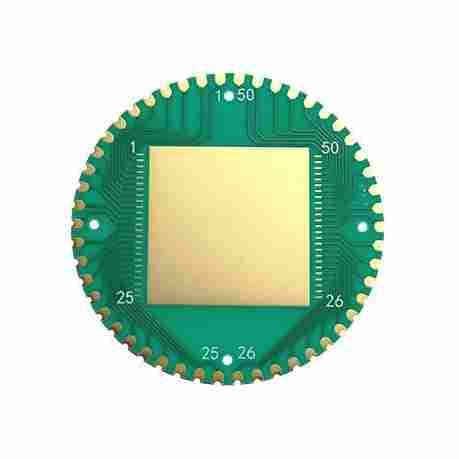
99% AlO Substrate Material Benefits
When selecting materials for PCB manufacturing, the choice of substrate directly impacts performance and longevity. PCB manufacturing companies increasingly rely on 99% aluminum oxide (Al₂O₃) due to its unmatched thermal conductivity—up to 24-28 W/mK—which efficiently dissipates heat in high-power applications. This property is critical for preventing thermal stress in components, ensuring reliability in sectors like automotive electronics or telecom infrastructure.
The high purity of 99% Al₂O₃ minimizes ionic contamination, reducing risks of electrical leakage and enhancing signal integrity. For PCB manufacturing cost optimization, this material’s durability lowers replacement frequency, balancing upfront expenses with long-term savings. Its mechanical stability also supports complex designs, allowing PCB manufacturing businesses to meet stringent tolerances without compromising structural integrity.
Moreover, the material’s compatibility with thick-film and thin-film processes simplifies integration into existing production lines. By minimizing warping during sintering, it ensures consistent layer alignment—a key factor for high-density interconnects. Whether you’re designing for aerospace or industrial systems, 99% Al₂O₃ substrates provide a foundation where thermal management and electrical performance converge, addressing challenges that lesser materials cannot. This combination of attributes makes it indispensable for applications demanding both precision and resilience.

Alumina PCB Manufacturing Process Innovations
Advancements in PCB manufacturing techniques have redefined how high-performance alumina substrates are produced. Leading PCB manufacturing companies now employ laser drilling systems capable of achieving 50μm microvias, enhancing thermal dissipation while maintaining structural integrity in multi-layer designs. You’ll find that precision-driven methods like direct metallization eliminate traditional etching steps, reducing PCB manufacturing cost by up to 18% while improving conductor adhesion for high-temperature environments.
To address warpage challenges in large-format alumina boards, manufacturers integrate automated optical inspection (AOI) systems with machine learning algorithms. These systems detect sub-10μm dimensional variances during lamination, ensuring consistent dielectric layer thickness critical for high-frequency signal integrity. For your PCB manufacturing business, adopting gas-phase deposition for ceramic coatings can boost thermal cycling resistance by 40%, directly supporting applications in automotive power modules or 5G base stations.
Transitioning to roll-to-roll processing for thin-film alumina substrates allows continuous production of 0.15mm-thick boards, a key innovation for compact wearable devices. By optimizing sintering profiles and debinding parameters, manufacturers achieve 99.3% Al₂O₃ density, minimizing voids that compromise thermal conductivity. These process refinements not only elevate reliability but also position alumina PCBs as cost-competitive alternatives in markets demanding extreme thermal stability.
Automotive Electronics Thermal Control Systems
As vehicle technologies advance, managing heat in automotive electronics becomes critical to ensuring long-term reliability. PCB manufacturing companies specializing in alumina substrates address this challenge by leveraging high thermal conductivity (24-28 W/mK) of 99% Al₂O₃ ceramics. These materials efficiently dissipate heat from power converters, LED modules, and engine control units, preventing thermal runaway in compact, high-density designs.
When selecting a PCB manufacturing partner for automotive systems, prioritize suppliers that integrate laser drilling and precision metallization to enhance thermal pathways. These processes reduce PCB manufacturing cost by minimizing material waste while improving heat distribution across the board. For example, alumina’s low coefficient of thermal expansion (CTE) ensures stable performance under repeated temperature cycling (-40°C to 150°C), a common stressor in electric vehicle (EV) powertrains.
Optimizing thermal control also involves balancing signal integrity with heat dissipation. Advanced PCB manufacturing business workflows now embed simulation tools to predict hotspots during design phases, allowing preemptive layout adjustments. This proactive approach reduces warranty claims and aligns with automotive industry standards like AEC-Q200, which mandates rigorous reliability testing for electronic components. By adopting alumina-based solutions, automakers achieve tighter integration of safety-critical systems without compromising on thermal resilience.

Telecom Infrastructure Reliability Enhancements
When deploying telecom systems, maintaining PCB manufacturing precision becomes critical for handling high-frequency signals and thermal stresses. Leading PCB manufacturing companies leverage 99% Al₂O₃ substrates to address signal attenuation and heat dissipation challenges inherent in 5G base stations and data transmission equipment. These substrates exhibit ultra-low dielectric loss, ensuring minimal signal distortion even under prolonged operational loads.
To mitigate PCB manufacturing cost pressures, advanced laser drilling and automated optical inspection (AOI) systems are integrated, reducing defects by over 30% in multilayer designs. This precision directly enhances mean time between failures (MTBF), a key metric for telecom operators prioritizing uptime. Additionally, optimized thermal vias and copper-plated traces distribute heat more efficiently, preventing hotspots that could degrade component lifetimes.
For PCB manufacturing business stakeholders, partnering with alumina specialists ensures compliance with Telcordia GR-78 and IEC 61249-2-21 standards, which govern material stability in harsh environments. By adopting these solutions, you not only improve network resilience but also lower total ownership costs through extended maintenance intervals and reduced downtime risks. This strategic alignment between material innovation and process efficiency underscores the role of alumina PCBs in future-proofing telecom infrastructure.
High-Performance Ceramic PCB Applications
When designing advanced electronic systems, you need substrates that handle extreme thermal and electrical demands. High-performance ceramic PCBs, particularly those using 99% Al₂O₃ substrates, excel in environments where traditional materials fail. For instance, in aerospace systems, these boards maintain signal integrity under rapid temperature fluctuations, while automotive power modules rely on their ability to dissipate heat from high-current components like IGBTs.
PCB manufacturing companies specializing in alumina ceramics optimize processes to reduce PCB manufacturing cost without compromising quality. This is critical for industries like telecom infrastructure, where dense 5G base stations require ultra-reliable interconnects. By leveraging advanced laser drilling and precision metallization, manufacturers ensure consistent performance even in high-vibration settings.
If you’re managing a PCB manufacturing business, partnering with suppliers who understand thermal expansion matching and high-frequency signal loss becomes essential. Applications in medical imaging or industrial sensors further highlight how alumina’s dielectric properties minimize crosstalk, enabling cleaner data transmission. The choice of substrate directly impacts long-term reliability, making it vital to align material capabilities with your system’s operational thresholds.
Optimizing Signal Integrity with Alumina Substrates
When designing high-frequency circuits, maintaining signal integrity becomes critical to prevent distortions or losses. Alumina substrates (Al₂O₃) excel here due to their low dielectric loss and stable dielectric constant across wide temperature ranges. This ensures minimal signal attenuation, even in environments where thermal fluctuations are common. For PCB manufacturing companies, leveraging alumina’s properties allows tighter control over impedance matching—a key factor in high-speed digital or RF applications.
Advanced PCB manufacturing processes for alumina substrates incorporate precision laser drilling and thin-film metallization, reducing parasitic capacitance that can degrade signal quality. You’ll notice that pcb manufacturing cost considerations often balance these specialized techniques against the long-term reliability gains. By minimizing crosstalk and electromagnetic interference (EMI), alumina-based boards enable cleaner signal paths, which is especially vital for 5G infrastructure or automotive radar systems.
To further optimize performance, many manufacturers integrate controlled impedance layers and ground plane shielding directly into the substrate. This approach not only enhances signal fidelity but also aligns with the broader goals of pcb manufacturing business models focused on high-reliability markets. Whether you’re scaling telecom infrastructure or refining aerospace electronics, alumina’s combination of thermal stability and electrical consistency ensures your designs meet stringent signal integrity requirements without compromising durability.
Conclusion
When selecting PCB manufacturing companies for alumina-based solutions, you need to prioritize expertise in handling thermal management and reliability challenges. High-performance applications, such as automotive electronics and telecom infrastructure, demand substrates like 99% Al₂O₃ ceramics to ensure optimal heat dissipation and long-term stability. By partnering with specialized PCB manufacturing providers, you gain access to advanced processes that minimize PCB manufacturing cost while maximizing durability—critical for industries where operational extremes are routine.
Innovations in PCB manufacturing business practices, including laser drilling and precision metallization, enable tighter control over signal integrity and thermal expansion mismatches. These advancements ensure that alumina PCBs maintain performance under high-frequency or high-temperature conditions, reducing downtime and lifecycle expenses. Whether you’re designing power modules or RF systems, understanding the interplay between material properties and manufacturing techniques helps you balance performance requirements with budget constraints. Ultimately, aligning with suppliers who prioritize material science and process innovation ensures your projects meet both technical and economic goals seamlessly.
Frequently Asked Questions
Why choose alumina over standard FR-4 for high-power applications?
Alumina’s exceptional thermal conductivity (24-28 W/mK) outperforms FR-4, making it ideal for PCB manufacturing in high-power systems. Its 99% Al₂O₃ substrates efficiently dissipate heat, reducing thermal stress and enhancing device longevity.
How do PCB manufacturing companies manage costs for alumina-based designs?
Costs are optimized through advanced laser drilling, precision metallization, and automated quality checks. While PCB manufacturing cost for alumina is higher than standard materials, its reliability in high-temperature environments justifies the investment for automotive and telecom industries.
What reliability challenges exist in PCB manufacturing business for harsh environments?
Alumina PCBs address delamination and thermal cycling failures by using coefficient of thermal expansion (CTE)-matched layers. Manufacturers integrate hermetic sealing and thick-film resistors to ensure stability in automotive electronics and 5G infrastructure.
Can alumina substrates improve signal integrity in RF applications?
Yes. The low dielectric loss of 99% Al₂O₃ minimizes signal distortion, critical for telecom systems. PCB manufacturing companies optimize trace layouts and impedance control to meet high-frequency performance requirements.
Partner with Experts for Custom Alumina PCB Solutions
For tailored thermal management and reliability strategies, please click here to explore advanced PCB manufacturing services designed for high-performance applications.

